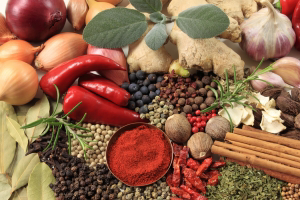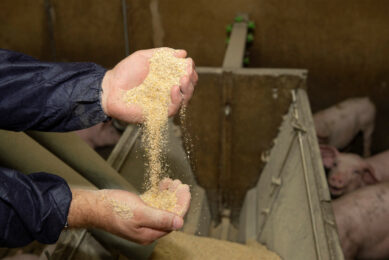The European way out of AGPs with phytogenics

Concerns over the development of antimicrobial resistance led to a ban of all antibiotic growth promoters (AGPs) in the European Union in 2006. Before that, the use of Olaquindox, Carbadox, Virginiamycin and Tylosinphosphate among others had already been banned since 1999. A brief description of the history of legislation regarding feed use of antimicrobials and the experience of animal producers following the ban will serve to illustrate the consequences on animal performance and health. Furthermore, the use of alternative concepts in Europe will be discussed with a focus on phytogenic feed additives and feed and food safety.
Antimicrobials, such as antibiotics, are substances used to kill micro-organisms or to stop them from growing and multiplying. They are commonly used in human and veterinary medicine to treat a wide variety of infectious diseases but have also been used for non medical purposes to improve the performance of live stock. The overuse or misuse of antibiotics has however been linked to the emergence and spread of micro-organisms which are resistant to antibiotics, rendering treatment ineffective and posing a serious risk to public health. A well known example of a bacterium that has acquired resistance to multiple antibiotics is Meticillin-resistant Staphylococcus aureus (MRSA).
Resistant bacteria can spread through many routes. Because antimicrobial resistance occurring in zoonotic bacteria in animals and food can also compromise the effective treatment of infectious diseases in humans, the EU launched a strategy in 2001 to combat the threat of antimicrobial resistance to human and animal health. This strategy included the phasing out of antibiotics for non-medical use in animals and in January 2006 EU legislation banned the application of antibiotics used for growth promotion in animal feed entirely (EFSA).
This ban has led to a widespread search for alternatives in the European feed industry. First of all it is important to create an optimal environment for the animal and to avoid all unnecessary stress factors, since stress may often trigger the outbreak of infections. Hormone changes caused by stress may lead to decline of feed intake, altered nutrient metabolism and immune suppression. Reducing the stocking density and paying attention to hygiene and air quality in the barns are important management factors in animal production. There are also different approaches in nutrition to improve health and performance even without antibiotic growth promoters. Apart from optimising diet formulation in regard to protein content and buffering capacity the use of different feed additives has shown good results.
Organic acids
The buffering capacity in the feed plays an important role in reducing the incidence of diarrhoea and improving performance. The lower the buffering capacity is in combination with an optimal nutrient supply, the better. The target values should be no higher than 700 meq HCL/kg of feed measured at pH 3. Organic acids are used for this application for some time now with good results. Furthermore the use of organic acids as preservatives to increase feed hygiene is essential for the production of healthy food. Salmonella in particular are one of the most important groups of bacteria responsible for disease in animals and man. Infected raw materials and compound feed are potentially a source of Salmonella contamination. By using organic acids, decontamination can be achieved and recontamination with pathogens can be prevented.
Probiotics
The turn to application of probiotics and the utilisation of competitive exclusion may lead to an optimised production. By stabilising the natural intestinal flora, colonisation with pathogenic bacteria can be counteracted and the application of antibiotics can be reduced. In addition, the probiotics may stimulate the immune response of the animals by increasing the build up of antibodies. Numerous studies have shown that probiotics also may have performance enhancing properties. Different modes of action were postulated for the beneficial effects of direct fed microbials (Table 1).
Phytogenic feed additives
More and more, of the so called phytogenic feed additives gain interest in pig and poultry nutrition. Plant extracts, herbs and spices have been used in traditional human medicine and are well known for their pharmacological effects. They can among other things improve the taste of food, stimulate the secretion of digestive juices and influence the immune status. A number of trials have also demonstrated antibacterial, antioxidant and anti-inflammatory effects of secondary plant ingredients. The antimicrobial action of essential oils has been attributed to their lipophilic character, whereby the essential oil(s) may be able to suppress pathogenic bacteria by either penetrating into the cell or disintegrating the bacterial cell membrane. Since infectious diseases like necrotic enteritis or Salmonella are some of the main problems in poultry operations, the antimicrobial properties of these ingredients are of special relevance in the substitution of the classical anti microbial feed additives. An in vitro scree
ing study, where selected plant extract were tested against Clostridium perfringens, shows the potential of phytogenic additives in poultry nutrition. An authentic medium was prepared from ileal digesta of chicks and incubated in the presence of Cl. perfringens. The effect of different dosages of the plant extract was compared to a negative control and to the positive control Monensin (Figure 1). It is interesting to note that the plant extract gave a dose response and, at a dosage of 40 µg/ml, had the same inhibiting effect on Clostridium perfringens as the well known ionophore Monensin. Flavanols, flavones, flavanones, isoflavones, catechins, chalcones and anthocyanidins for instance found in red grape skins or seeds can be shown to have an antioxidant effect 20 to 50 times greater than Vitamin E and may reduce inflammatory processes. This theory was tested in vitro at the University of Giessen, Germany with an ethanolic plant extract rich in polyphenoles (AntaOx E). The authors evaluated the anti-inflammatory potential of the plant extract by studying its effect on the pro-inflammatory transcription factor nF-B and found a reduction of the TNF-induced nF-B transactivation and decreased mRNA levels of the TNF-induced nF-B target genes IL-1, IL-8, MCP-1 and CXCL1. They concluded that polyphenole rich plant extracts of this kind may prove useful as feed additives to prevent inflammatory processes in the intestine of livestock.
Plant extracts in live animals
Since results obtained in vitro are not always transferable into practical conditions it is advisable to verify the findings in vivo. Therefore in 2011 a broiler trial based on the findings described above was conducted at the Free University of Berlin, Institute for Animal Nutrition, Department of Veterinary Medicine . The objective of the trial was to test the efficacy of a combination of the different active substances which were screened for their anti-microbial and anti-inflammatory action in practice.
The trial was conducted with 320 broilers (Cobb) from day 1 to day 35 in floorpens. The starter and finisher diet was based on maize and soy bean meal. The treatment group received the phytogenic feed additive AntaPhyt MO at a dosage of 400 g/t of feed. Feed intake per pen was measured. Feed intake per chick and also feed conversion rate were calculated using average live weight gain per pen (including dead or culled animals). In total 8 animals died or were culled during the trial which means a mortality rate of 2.5 %. No changes in faecal consistency could be observed. While feed intake was increased by 1.4 % in the treatment group, feed conversion (kg feed/kg live weight gain) was decreased by 2.1 %. Live weight gain was numerically improved on average by 3.7 % by using AntaPhyt MO. The positive effect was statistically significant during change from starter to finisher feed and in the first week of the finishing feed (Figure 2).
Effect on litter quality
Also measured in this trial was the moisture content of the litter. Foot pad diseases like foot pad dermatitis are common problems in poultry production systems. Foot pad diseases are caused mainly by infections of the gastro-intestinal tract, feed composition and feed structure and by litter quality. High moisture content in litter, for instance higher than 35 %, has been shown to be critical and to lead to skin reactions. It was therefore of interest to see if the observed positive effects of the different plant extracts in AntaPhyt MO may also improve litter quality. The results are shown in Figure 3. The application of phytogenic decreased moisture content in the litter significantly by 7.21%.
Additional microbial analyses of the faeces showed a slight reduction in the microbial load for the analysed bacterial groups, which was significant for the group of bacteroides (log 10.69 vs log 8.66 for control and treatment group respectively). While the reduction was not significant for the other bacteria, the result may nonetheless be an indication for the antimicrobial activity of certain plant ingredients which may in turn have a positive effect on the birds by reducing competition for nutrients between host and microflora.
These results show that herbs or phytochemicals for instance in the combination AntaPhyt MO can selectively influence the micro-organisms by an anti-microbial activity or by a favourable stimulation of the eubiosis of the microflora. The consequence is a better nutrient utilisation and absorption and maybe also the stimulation of the immune system.












